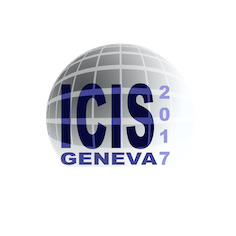Speaker
Description
Sources for negative hydrogen ions for accelerator front-ends or neutral beam injection systems of fusion experiments use the surface conversion mechanism to convert hydrogen atoms and positive ions from a low temperature hydrogen plasma to negative ions. The efficiency of the underlying conversion mechanism is dominantly determined by the work function of the surface, which is the reason for using low-work-function materials. These materials, e.g. caesiated surfaces or materials with inherently low work function, typically show also a high chemical reactivity and are thus easily affected by impurities from background gases. In H$^-$ sources background pressures are typically in the range of $10^{-7}-10^{-6}$ mbar and furthermore the surface is recurring in contact with a hydrogen plasma. On the contrary, work function values of low-work-function materials found in the literature are mostly measured in ultra-high vacuum (below $10^{-9}$ mbar) and can consequently not be applied to the conditions present in negative ion sources. Hence, dedicated fundamental investigations are performed under ion source conditions at a flexible laboratory experiment aiming at the parameters influencing the surface work function. Absolute work function values are determined via the Fowler method [1,2]. Investigated materials include caesiated and Cs-doped surfaces as well as lanthanated (MoLa, WL10, LaB$_6$) and bariated (tungsten dispenser cathode) materials.
It is shown, that with caesiated surfaces the lowest work function of all so far investigated materials can be achieved (measured down to $\approx\,$2 eV). However, this value is highly dependent on Cs influx, plasma surface interaction and impurity incorporation. Cs-free materials do not exhibit such a distinct dynamical behavior, while their nominal work function values taken from the literature are expected in the range of 2.1$-$3.0 eV. Measurements of the negative ion density above such surfaces have, however, already shown [3] that the enhancing effect on $n_{\mathrm{H}^-}$ is much less pronounced than for caesium, which is attributed to surface work functions higher than the nominal values. In order to obtain the envisaged low work function, several of these materials require specific activation procedures at temperatures up to 1500 °C. At conditions closer to typical ion source operation, i.e. surface temperature of below 250 °C in a H$_2$ plasma, lanthanated tungsten (WL10) for instance showed a decrease of the work function of only down to about 4 eV.
Hence, ways of optimizing the work function of Cs-free as well as caesiated surfaces are investigated by a wide-ranging variation of the surface temperature, inducing plasma surface interaction with and without biasing the sample surface as well as combinations of it. Furthermore, the stability and/or degradation behavior of the work function with and without plasma exposure is of major interest.
References
[1] R. H. Fowler, Phys. Rev. 38, 45 (1931).
[2] R. Friedl, Rev. Sci. Instr. 87, 043901 (2016).
[3] U. Kurutz, R. Friedl, and U. Fantz, Plasma Phys. Control. Fusion 59, 075008 (2017).




